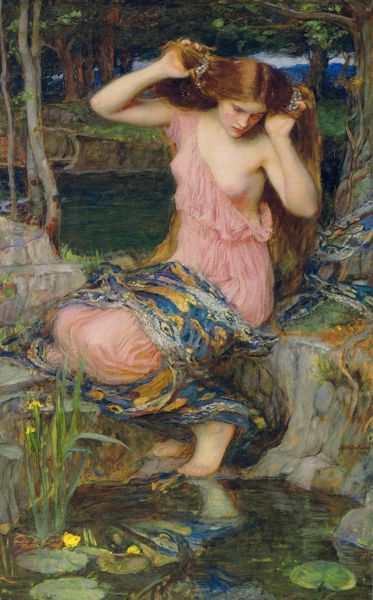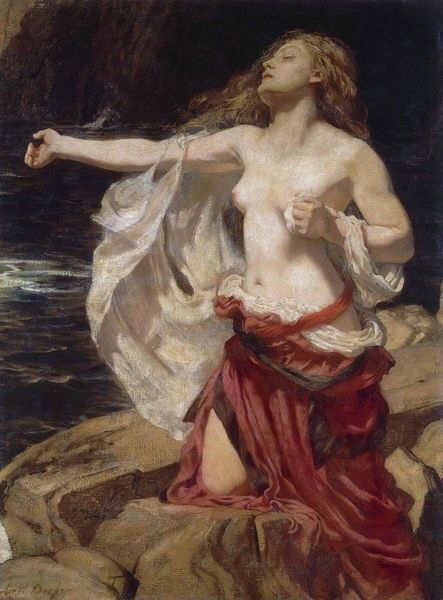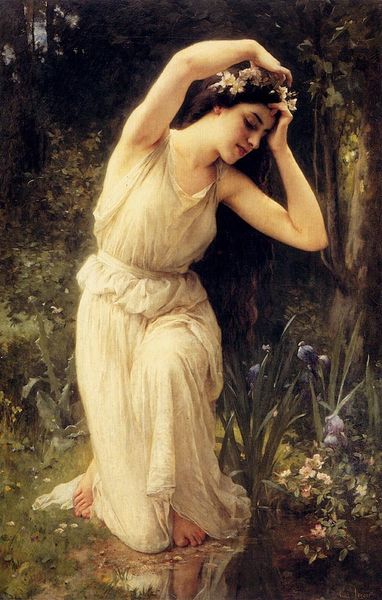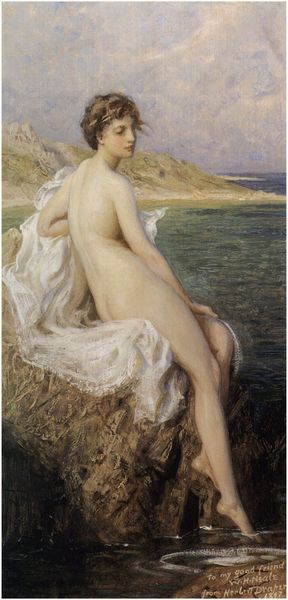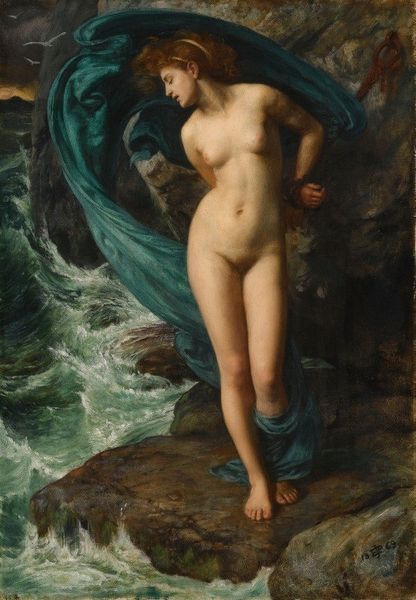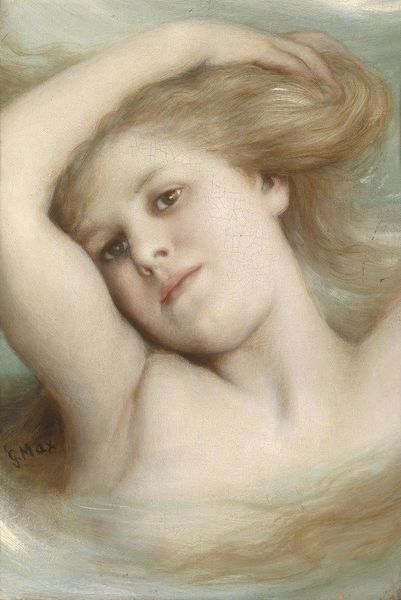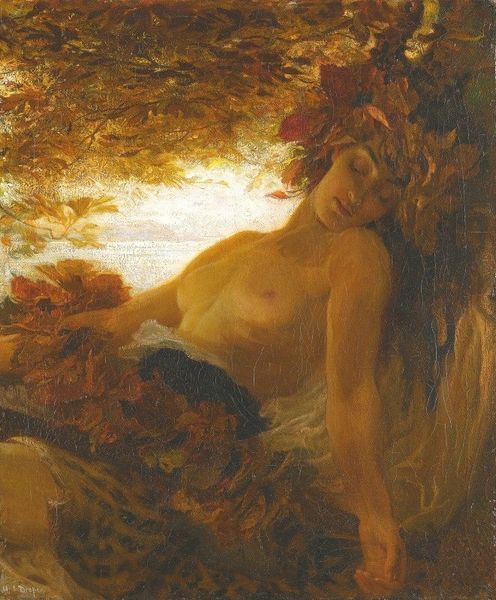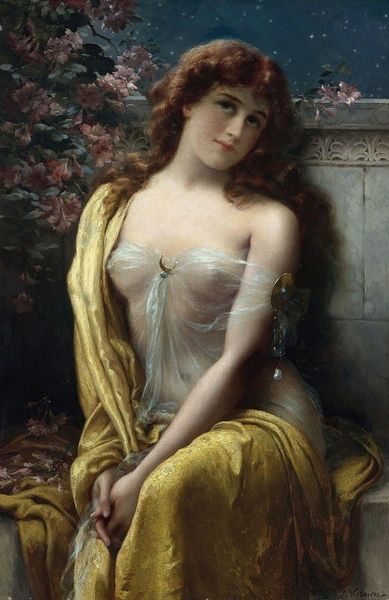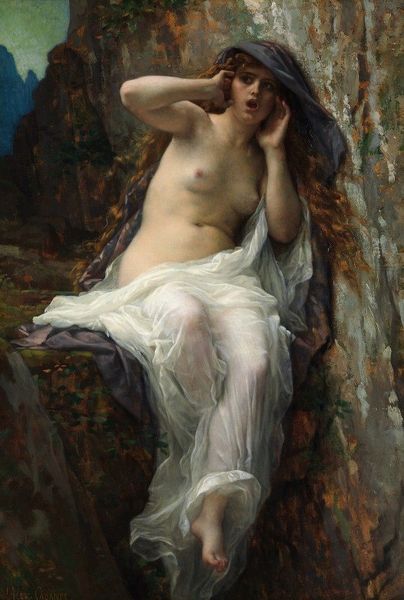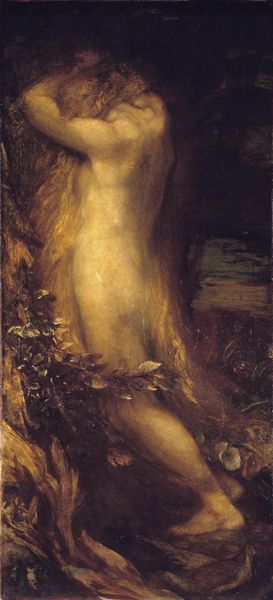
painting, oil-paint
#
allegory
#
painting
#
oil-paint
#
landscape
#
figuration
#
romanticism
#
history-painting
#
nude
Copyright: Public domain
Herbert James Draper painted this Lamia, likely near the turn of the twentieth century. It offers an interesting window into the artistic conventions of the time, but also into its social and cultural codes. Draper was working in Britain at a time of intense interest in classical mythology. The figure of Lamia comes from ancient Greek myth, but Draper likely draws on Keats's famous poem of the same name. This tells of a beautiful woman who is also a serpent. Draper's semi-nude figure alludes to the eroticism and danger of this mythical figure, but also engages with contemporary ideals of feminine beauty. To understand this artwork, we might research the Victorian art world, the Pre-Raphaelite movement, and the roles of institutions such as the Royal Academy. We would explore the classical tradition in British art, and changing attitudes towards women and sexuality. Ultimately, this painting speaks to the complex interplay between artistic tradition, social norms, and individual expression.
Comments
No comments
Be the first to comment and join the conversation on the ultimate creative platform.
